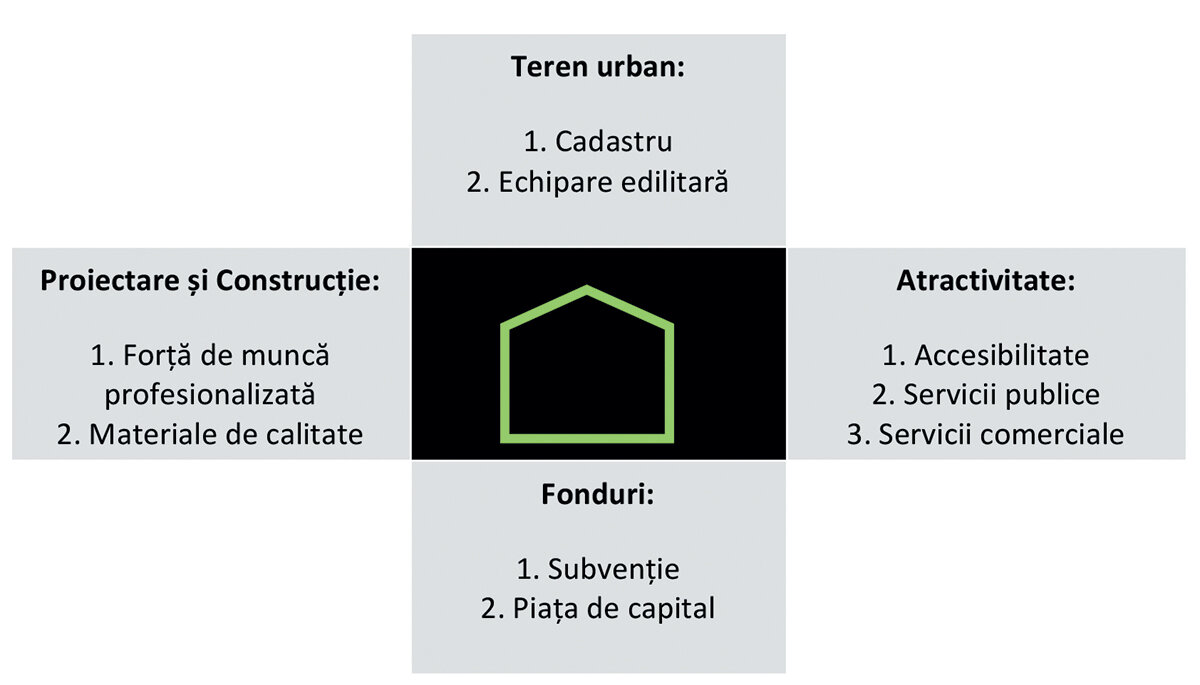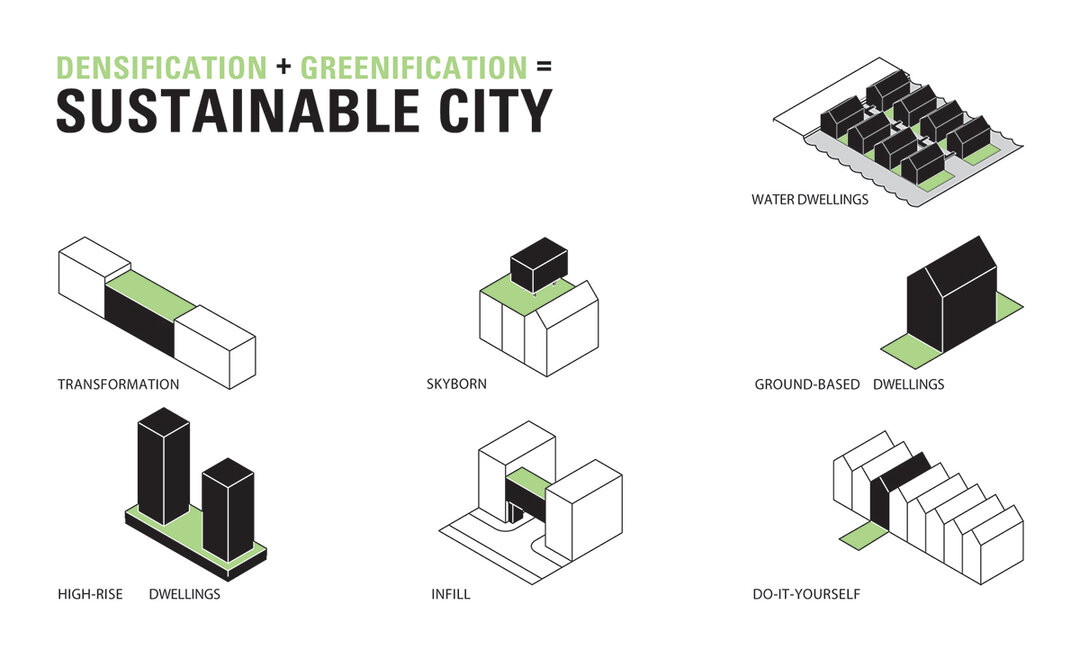
Housing policies: The Constituents of a Housing Policy

Starting a discussion about housing is very similar to choosing to read this text. Some of us have a home and therefore approaching this topic may be less appealing, while others, in the adventure of searching for a home, may be interested in the topic. Symmetrically, a housing policy may be linked to the administration's interest in increasing the number of dwellings, in improving the quality of housing conditions, in promoting a change in the relationships concerning the ownership of an existing housing stock, or in a progressive or regressive change in the distribution of the financial resources needed to build or rehabilitate housing.
An answer to this question is closely linked to the culture of administration, to the way in which politicians understand the issue of housing and its social and economic role. Western European countries already have rich experience and a significant number of examples of housing policies formulated and implemented in times of crisis or transition from one political system to another. What is different is the definition of the subject and context, i.e. the individual or family in need of housing, and the characteristics of the economic and political space in which housing can be achieved. In some countries, such as the Netherlands or Great Britain, the response to the housing crisis after the Second World War has been the government's response to the crisis by stimulating construction, by carefully involving the state in regulating construction activities and the supply of materials, and by providing subsidies. During the post-World War II reconstruction period in Germany, housing policies were based on state intervention in the rental market (by controlling or subsidizing rents).
The shift away from these "paternal" but effective strategies towards a free, functioning market lasted for more than 40 years and has not been entirely abandoned, with the government's hand in establishing effective regulatory mechanisms for the rental market for newly constructed buildings remaining visible. Moreover, even with a market that is sufficiently well developed to regulate itself, the private construction sector turns to the state in times of economic crisis to initiate new projects. What is particular to the experience of Western European countries is the careful delineation of responsibilities between those involved in the housing market: the state, regional and local authorities, private investors and builders, tenants' associations, tenants' associations, non-profit organizations, etc.
What roles do housing market actors play? The responsibilities are different and cover areas such as securing the housing stock, ensuring tenants' rights, supporting disadvantaged groups and setting the conditions for the functioning of a housing market (buildings and land).
A. Securing the housing stock
The preparation stage of the construction process involves public or public-private decisions on the construction of new housing or the reconstruction of old housing. The preparatory stage requires coordination of housing policy with urban development and infrastructure needs (roads, water, sewerage, electricity, services, etc.). At this stage, it is compulsory to estimate the needs, which is the basis for programming: housing needs, together with an inventory of the resources needed to build them, land, financial funds, labor, materials and specific technologies and equipment.
Important operations prior to the construction of new residential buildings are strictly related to how a community wishes to use its land reserve, preparing land designated for housing for new investments, identifying forms of possession or whether instruments such as expropriation will be used. The main objective of this phase is to avoid real estate speculation and the development of new investments on suitable land, i.e. with adequate accessibility and infrastructure, and how the involvement of citizens, buyers, but above all residents, is achieved.
An important role in securing the housing fund is played by financing, whether from public or private sources, often from the capital market. Partnerships from both private and public sources are common in advanced market economies. The complexity of financing and subsidies in the free market context is given by the rate of economic growth, inflation rate, nominal and real interest rates, which influence the distribution of money among landowners, entrepreneurs, financial institutions and beneficiaries/users.
Land and building costs, as well as construction costs, involve sometimes diverging public and private interests. High building and land-related costs can hinder the achievement of set objectives by diverting funds to other areas of investment interest, away from, for example, disadvantaged populations. For a subsidy program to be effective, it must be accompanied by a set of measures to keep building and land costs low. In the case of construction, a housing policy provides measures to promote competition and efficiency between construction and building materials firms in order to balance the rate of profit with the requirements of quality and efficiency in their areas of competence.
Allocation and Management are components that can, in the absence of regulations or clear rules of the game, destroy the implementation of a housing policy. In some countries, this is done through private, often municipal, agencies. The creation of public agencies is justified by a lack of affordable housing on the market. These public agencies also play a role in rent control by aiming directly at providing housing for people with special or disadvantaged needs, such as the homeless, families with children or young people looking for their first home. Process management can be seen as the last step in meeting housing needs. This refers to physical management (maintenance of the housing stock, repairs, etc.), financial management (setting rent levels, managing loans, etc.) or administrative management (rentals, eviction or vacancy notices, etc.). Management is extremely important for preserving the market value of housing and housing investment, balancing the rights and interest of landlords and tenants as laid down in contracts or legislation.

B. Ensuring tenants' rights
Housing policies include a number of measures aimed at promoting good housing management and efficient use of the existing stock, directly targeting tenants. Tenants' rights are an important part of civil law. They relate primarily to the protection of tenants, rent control and the adjustment of limits for existing contracts. Some countries apply rent control and price control measures for owner-occupied or tenant-occupied buildings, as well as a set of measures to protect tenants in the case of conversions or reconstruction of buildings.
C. Support for disadvantaged population
Housing policies also include measures for disadvantaged people facing temporary or permanent housing problems. Measures may include subsidies or allowances, loans for purchase, tax exemptions, etc.
D. Prerequisites for a functioning market
The preconditions for an effective housing policy are linked to the way the market functions. The factors on which the functioning of the housing market depends are:
a. a coherent system of land tenure forms for efficient exchange of land and buildings;
b. a financial market in which there is trust between investor and user;
c. a contractual basis for relations between the parties involved;
d. a professionalized construction workforce;
e. a competitive construction industry;
f. supply of building materials, machinery, etc.
g. a good distribution of information on all aspects of the housing sector;
h. regulations controlling the physical condition of buildings from a health and safety point of view;
i. operations prior to land preparation to facilitate access to land at a low price;
j. tenant involvement.






















